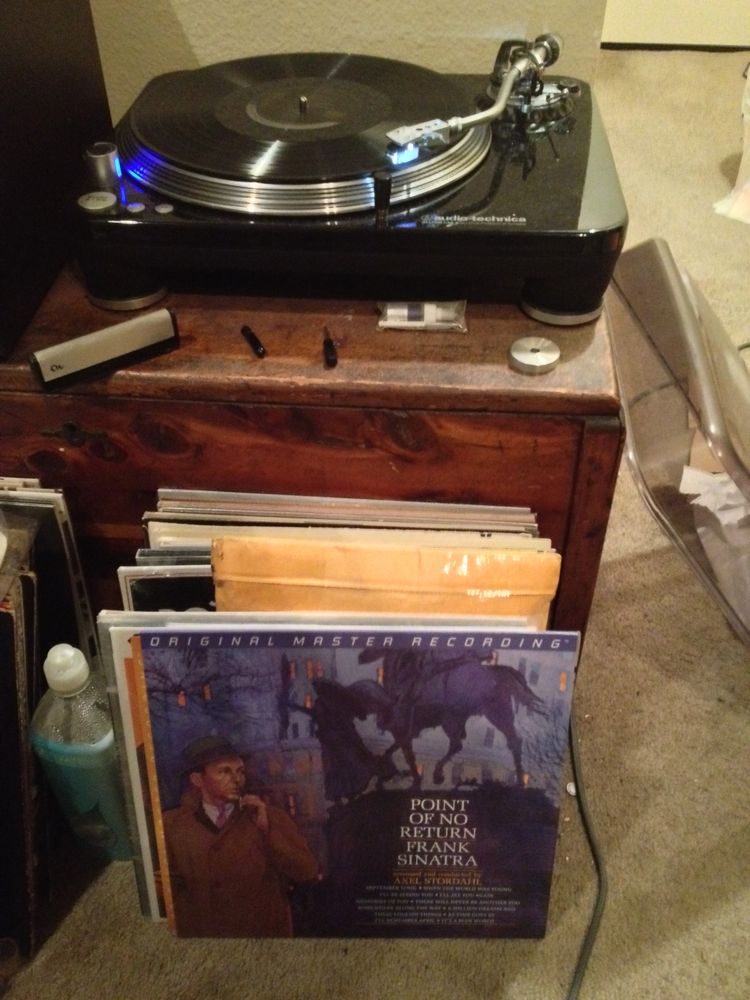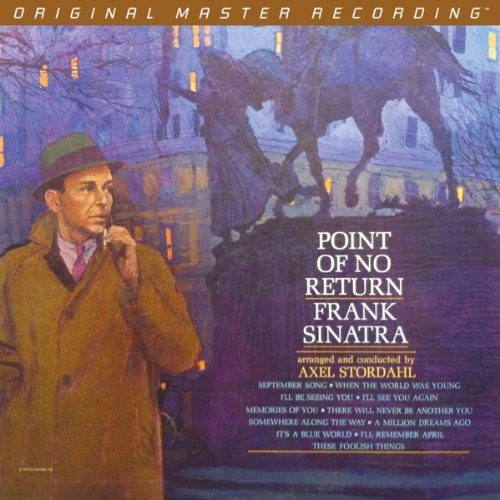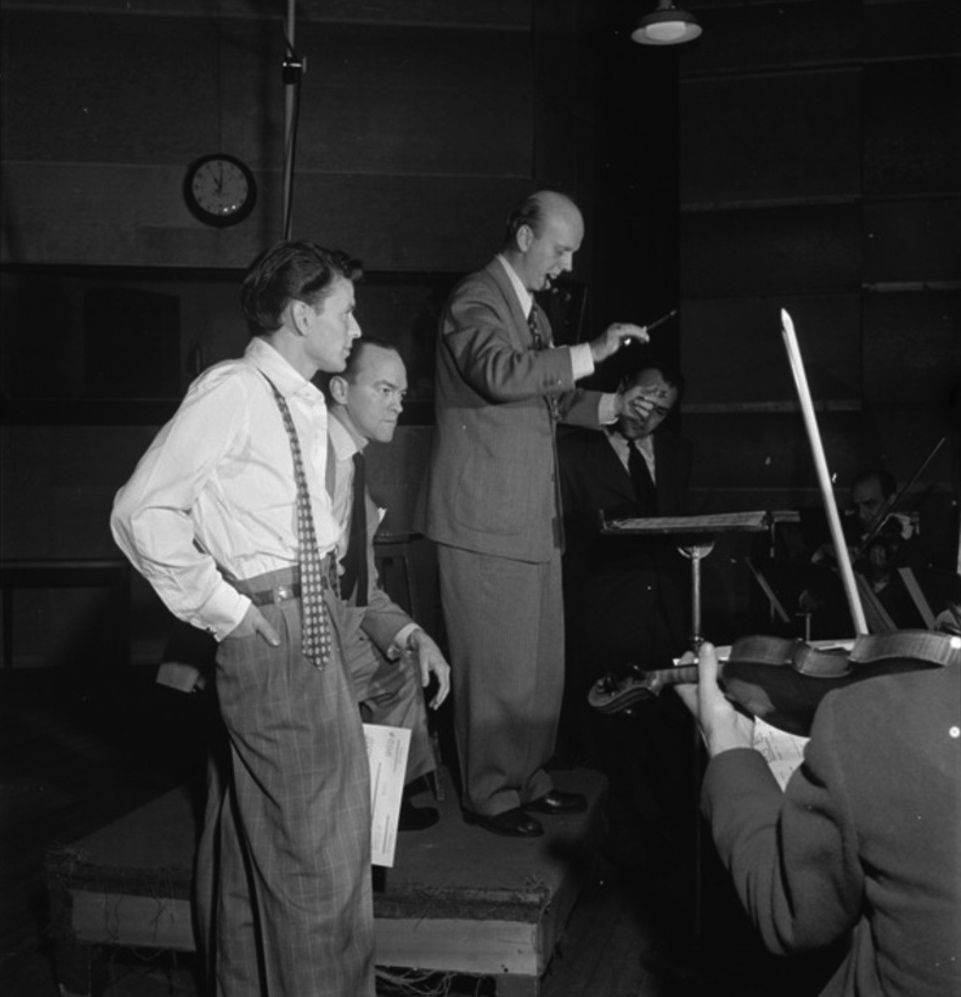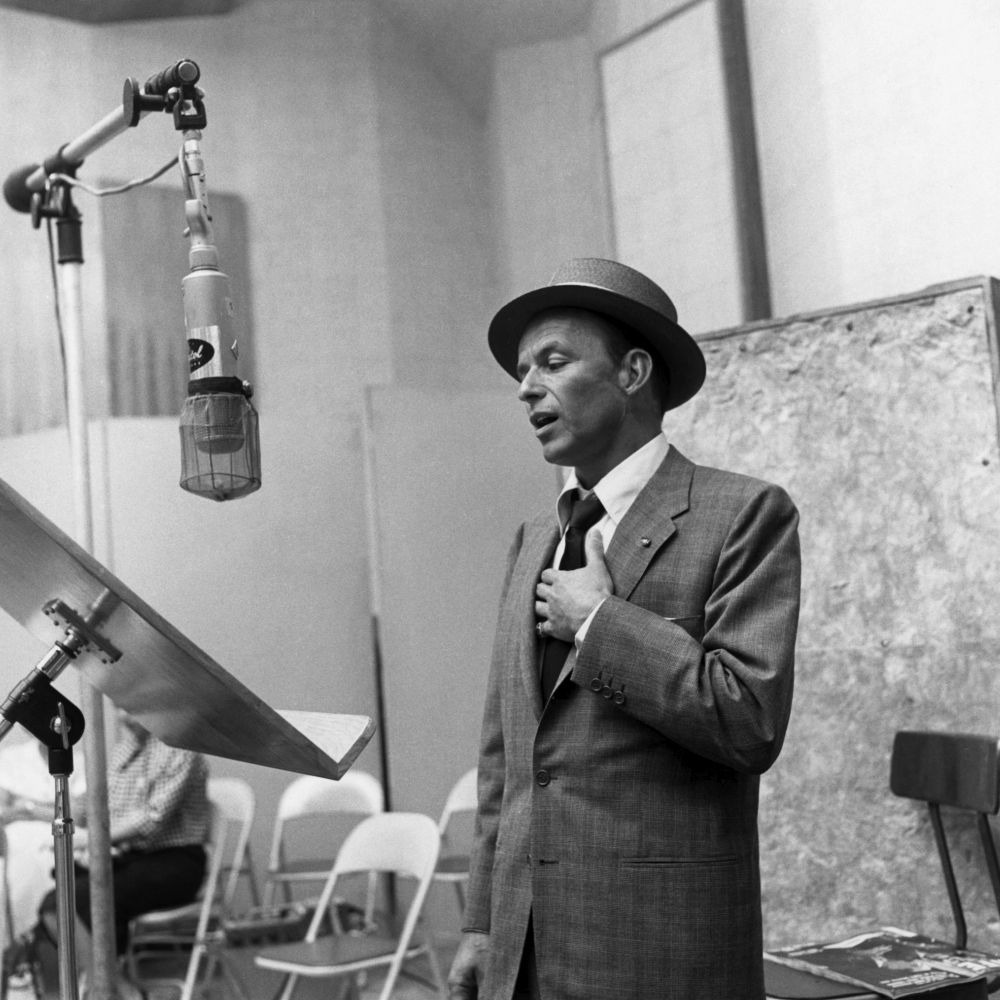This album, from 1962, was the last one Frank Sinatra made for Capitol Records. He had already announced his plan to leave the label in order to start his own, Reprise Records, and had begun recording tracks for release on Reprise, but he still owed Capitol one last LP under his old contract, and this is the LP he delivered, recorded in just two days.
Its reputation has suffered from being considered a perfunctory effort by Sinatra done for contractual reasons only. It was left out of Mobile Fidelity’s legendary audiophile vinyl collection of Sinatra’s Capitol albums (above), and it’s relatively hard to find as a used LP, except in an abridged version issued later by Capitol as a low-budget title.
Mobile Fidelity has just rectified its questionable decision to leave it out of its Sinatra box by issuing a fine 180-gram vinyl pressing of the complete album. It’s not one of Sinatra’s greatest Capitol LPs, but it’s hardly a negligible effort, either.
Interestingly, Sinatra got Alex Stordahl (with Sinatra above in 1947) to arrange the numbers on Point Of No Return. Stordahl, known for his swirling, sentimental (some might say syrupy) sound, had been Sinatra’s principal arranger during his years with Columbia. The Stordahl sound worked well with Sinatra’s voice in his boy crooner phase, and Stordahl arranged Sinatra’s first sessions when he moved to Capitol, but Sinatra was reinventing his artistic persona at that point and quickly moved on to other arrangers who had a hipper, jazzier vibe — Billy May, Gordon Jenkins and, most notably, Nelson Riddle.
So it was undoubtedly something of a sentimental gesture by Sinatra to bring Stordahl back for his last recordings at Capitol, ending up where he had started off, so to speak, completing a circle.
The album he and Stordahl created, however quickly, is quite fine. Neither is going for big effects here, for anything profoundly expressive, but the craft of both men was such that they simply couldn’t just toss something off heedlessly. These are good, solid interpretations of good, solid songs, inflected with Sinatra’s musical and emotional genius. It’s by no means unworthy of the great body of work Sinatra created at Capitol, which remains one of the glories of our civilization.
I would be remiss not to note that Point Of No Return has the coolest Sinatra album cover of all time — a Mad Men era illustration of the singer standing in front of the Plaza Hotel in NYC, next to the Sherman statue, in the rain, wearing a belt-less tan 50s type trench coat and a Stetson Nobel, smoking a cigarette. Like the title of the album, it has a melancholy, valedictory feel.
Click on the images to enlarge or isolate.







Great record and glad to see this is being given props. The arrangements by Alex Stordhal (and Heine Beau) are never less than first-rate and the mostly obscure song selection is effective because a lot of these songs now seem exclusive to this record.
Sinatra’s supposed lack of engagement doesn’t affect his singing, which always had emotional resonance, even when the emotions were “Why am I singing this?” (“Winchester Cathedral,” “Mrs. Robinson”). But it did affect the quality of the recording, since there were some technical glitches the engineers couldn’t repair after Sinatra refused to do more than one or two takes of each song. One of them comes at two minutes into “I’ll See You Again,” where a musician (or someone) hits a microphone and a distinct “TAP!” comes through on the right channel.
The others are more problematic: his singing was said to be flat in spots and when the engineer went to edit different takes together to use the best parts of each one, the vocal timbres didn’t always match up. This made for some rough listening on the original mono release, where you can distinctly hear lines cut in on “These Foolish Things.” A few songs, like “Somewhere Along the Way,” also have EQ problems, probably the result of trying to cover up edits.
These glitches, which Will Friedwald addresses in “The Song is You,” were mostly straightened up on the early ’90s CD reissue. Hopefully, Mobile Fidelity used digital editing to its fullest to make this release really shine.
“PONR” has always gotten the short shrift because it came out in the shadow of a bunch of absolutely brilliant Nelson Riddle-arranged Sinatra albums. But this album has its own charms and a warm, nostalgic feel all its own that only Sinatra and Stordahl could have conjured.
Thanks for that info about the technical glitches. I’m sure they’re there, mitigated or not in later releases, but I don’t think they significantly diminish the album as a whole, which generally, as you suggest, offers very fine performances of an interesting song list.
Thank you for information about the cover, so it was difficult to recognize the place… I was sure about Paris, but you’ve shown me that I was mistaken. Thanks, it’s impossible to find that information in Russian